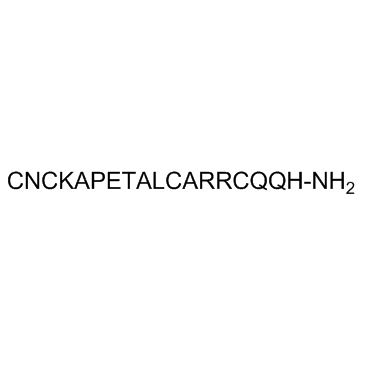| 结构式 | 名称/CAS号 | 全部文献 |
|---|---|---|
 |
蜂毒明肽
CAS:24345-16-2 |
|
 |
蜂毒肽
CAS:20449-79-0 |
| 结构式 | 名称/CAS号 | 全部文献 |
|---|---|---|
 |
蜂毒明肽
CAS:24345-16-2 |
|
 |
蜂毒肽
CAS:20449-79-0 |